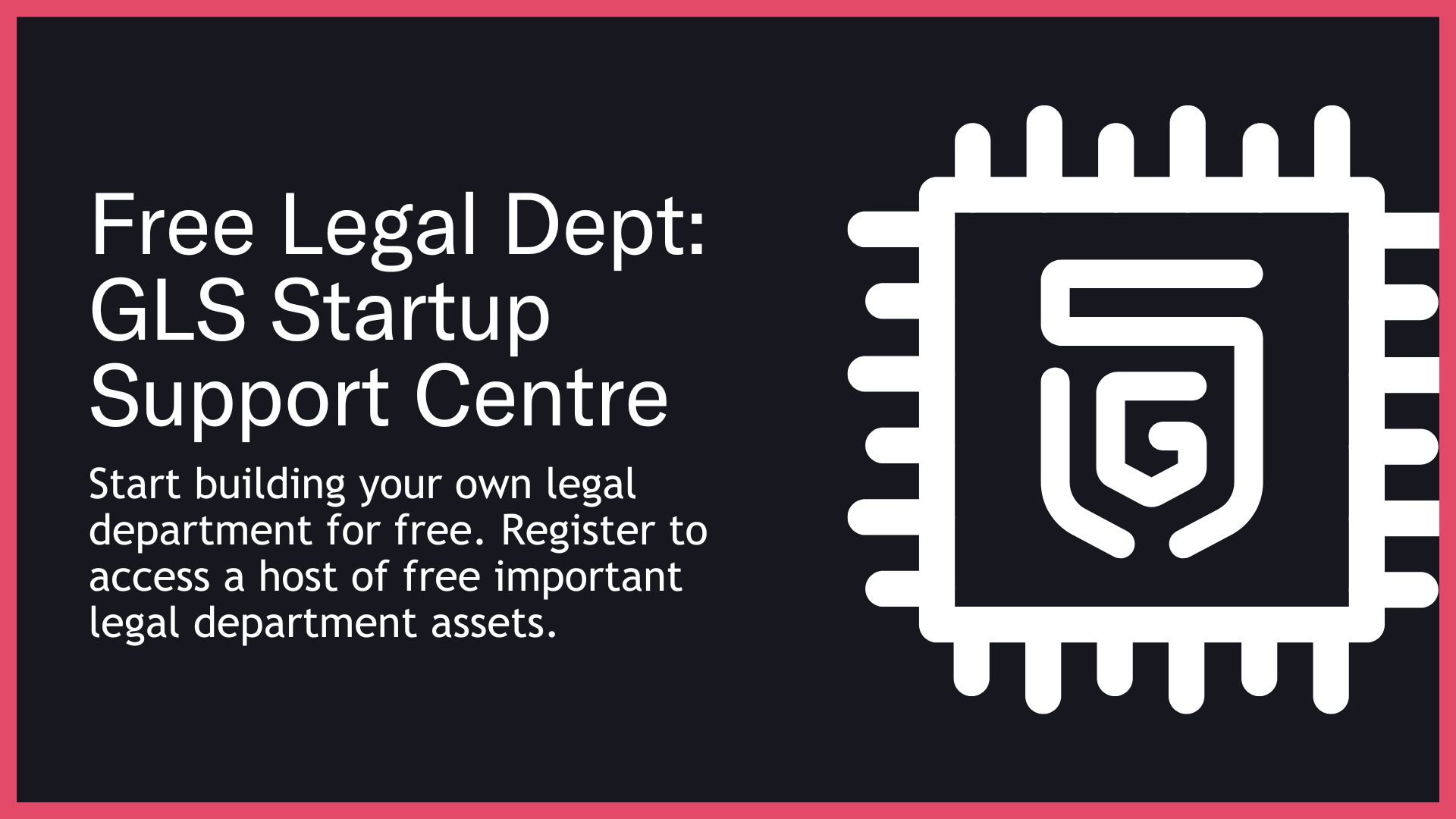Protecting Your IP
What is a Supply of Goods Contract?
10 mins • 24 Nov 21

Checklist to Protect your IP
We have come up with a list of viable suggestions you can take to best protect your money-making ideas.
Keep this list of our seven top tips handy for when you begin to evaluate your intellectual protection policy.
1. Conducting an IP Audit
Conducting an IP audit can be carried out to help:
- identify where IP is used in your organisation
- identify the ownership of the IPR
- assess the value of the organisation’s IP’s
Such an audit would facilitate the development of the IP portfolio by identifying potential IPR to obtain and assessing the progress in obtaining such rights. It would also make it easier to check third party infringement of the organisation’s IPR and flag out renewal or end dates.
2. Type of IP Protection – Trade Secrets vs Patent Protection
After identifying the IP critical to its business, an organisation should decide how it would like to protect its IP i.e. through a patent, trademark, trade secret, etc.
While the choice of IPR is probably obvious in most cases, there might be two applicable IPRs that could be obtained. In such cases, it is important to consider which protection is best suited for the commercialisation of the IP.
For example, such consideration would arise if the organisation’s inventions can be protected by a patent and by a trade secret. As obtaining a patent requires public disclosure while trade secrets must be kept confidential, businesses will have to choose - whether to patent the invention or to keep it a trade secret. Here are some reasons why trade secret protection might be preferred over patent protection, and visa versa:
Advantages of Trade Secret Protection
No time limit
Patent protection lasts for up to 20 years in general, whereas trade secret protection has no time limit and may continue indefinitely as long as it is not revealed to the public.
No registration
Patents must be registered, whereas trade secrets do not have to be registered. As such, trade secret protection would not incur any registration costs (which could be substantial for a young firm).
Immediate
Patent protection requires compliance with procedural formalities such as disclosure of the information to an IP authority while trade secret protection d Patent applications would take some time, whereas trade secrets have immediate effect.
Advantages of Patent Protection
Full trade protection
If the trade secret is embodied in a product, others can inspect, dissect and analyse it, or “reverse engineer” it and discover the trade secret. Trade secret protection of an invention in fact does not, in fact, provide the exclusive right to exclude third parties from making commercial use of it. Only patents and utility models can provide this type of protection.
No access with patent protection
Once the trade secret is made public, anyone may have access to it and use it at will.
Stronger protection
A trade secret is more difficult to enforce than a patent. The level of protection granted to trade secrets varies significantly from country to country but is generally considered weak, particularly when compared with the protection granted by a patent.
Sole owner
A trade secret may be patented by someone else who has developed the relevant information by legitimate means.
3. Registration
The registration of registrable IPR such as patents and trademarks is critical to ensure that the business holds the exclusive rights to use, licence or sell the IP. Without this, the business has no legal protection over its idea or product.
Generally, IPR should be registered as soon as possible. But please note that this general position might not hold true for Startups where the cost of registration might outweigh the potential benefits.
4. Renewal of IPR
The renewal of the terms for renewable IPR such as trademarks and domain names is also critical to ensure the continual ownership of IPR. Organisations should take note of when the renewal or end dates of their IPRs are, and take necessary steps to renew their IPRs if desired.
5. Ownership of the IPRs
Apart from the registration of the IPR, organisations can ensure they have a good title to use the IP in their business. This could include taking the following steps:
- Transfer of IP ownership from founders to the organisation at a consideration; and/or
- Ensuring your employment agreements provide for the transfer of IPR from your employees to your organisation.
6. Commercial Contracting
Where a commercial contract entered into by an organisation contemplates the transfer or use of IPR, both contracting parties would be well advised to clearly delineate the rights and obligations in relation to such use or transfer in the relevant commercial contract.
Things to Include in Commercial Contracts with regards to Intellectual Property Rights:
Employment contract:
Since employees may require the right to use a company’s IPR in order to carry out his/her duties, the employment agreement should specify the terms upon which such rights are granted to the employee.
Joint venture agreement:
Organisations should ensure that the ownership of IPR that is generated during the course of the joint venture is clearly delineated between the parties.
License Agreement:
A company may enter into a license agreement with third parties, to set out the terms upon which it grants such third parties the license to use its IPR.
7. Active Enforcement (e.g. Cease and Desist Letters)
IPRs (Intellectual Property Rights) give you recourse to the law to prevent third-party infringement. But such rights are illusory unless an organisation takes active steps to enforce its rights.
Litigation is obviously 1 method of active enforcement – an organisation may bring a civil suit against the third-party infringer for compensation for infringing on its IPRs.
Apart from litigation, another commercially savvy way to deal with infringement is to send a cease and desist letter. This serves as a formal warning to the third party to stop their infringing activities and those further penalties could follow if the behaviour does not stop.
While the cease and desist letter has no independent legal effect, it fulfils the important function of putting the offender on notice. The offender will be stopped from claiming that he/she did not know of the infringement.
That said, organisations should take some caution in issuing a cease and desist notice. Issuing a cease and desist notice under the wrong circumstances can cause legal troubles for the sender. If there are threats involved in the letter, it can amount to extortion or blackmail.
In addition, if the allegation of violation turns out to be false, the party receiving the letter can sue for a declaratory judgment. This false allegation may even potentially serve as the basis for a defamation action against the sender.
Protecting Intellectual Property Across Borders
As a starting point, it must be noted that IPRs are generally territorial in nature. This means that IP protection generally does not extend beyond the particular country in which it was created/granted. There are, however, certain international treaties or regimes that facilitate the registration and enforcement of IPR on a multilateral level.
Accordingly, if you are looking to expand your business overseas and/or conduct online cross-border business, you will have to consider your IPR and enforceability in more than one jurisdiction.
Intellectual Property Risk
If your Startup is based on a novel idea or creation, you will want exclusive protection over that idea/creation to prevent other parties from benefiting from it illegitimately.
Intellectual property rights are designed to grant exclusive rights to creators over the use of their creations of their mind, typically for a certain timeframe. This helps you to maintain a competitive edge in today’s market as your ideas or creation cannot be legally replicated freely – ensuring that you are the sole owner of that novelty.
Intellectual Property on Websites
Businesses should be careful to ensure that they do not infringe upon the IP rights of third parties, when they publish content on their website. IP claims could, after all, potentially result in businesses being liable for large amounts of monetary damages.
In this regard, it would be prudent for businesses to ensure that they obtain all necessary licences and/or consents before publishing content/material on their websites.
To conclude, IPRs may be critical for a Startup to protect its exclusive rights in its IP. Having such exclusive rights allows a Startup to build a competitive advantage over its market rivals. In order to obtain and maintain such protection, Startups would need to undertake a host of steps, including ascertaining the most appropriate form of IP protection, as well as making the requisite applications for registration and renewal.
Startups may not have the knowledge and experience necessary to undertake these steps and obtain the protection that they need for their IP. On the other hand, IP lawyers may have such knowledge and experience and can help Startups to navigate these processes.
Next steps
When it comes to legal basics, it can seem overwhelming at first. But, it doesn’t have to be. GLS offers a host of free Startup resources to help set you on your way. You can also browse our list of over 200 Legal Templates and Tools, to choose the products your Startup needs at each critical stage of business.
We also offer a wide range of subscription based Legal Support Plans created specifically for Startups who want a 360 degree service in creating their own virtual legal dept.
*The above content does not constitute, nor is it offered as, legal advice of any kind. GLS Solutions Pte Ltd is not a law firm and any support provided pursuant to this entity is not regulated legal advice or legal opinion.

